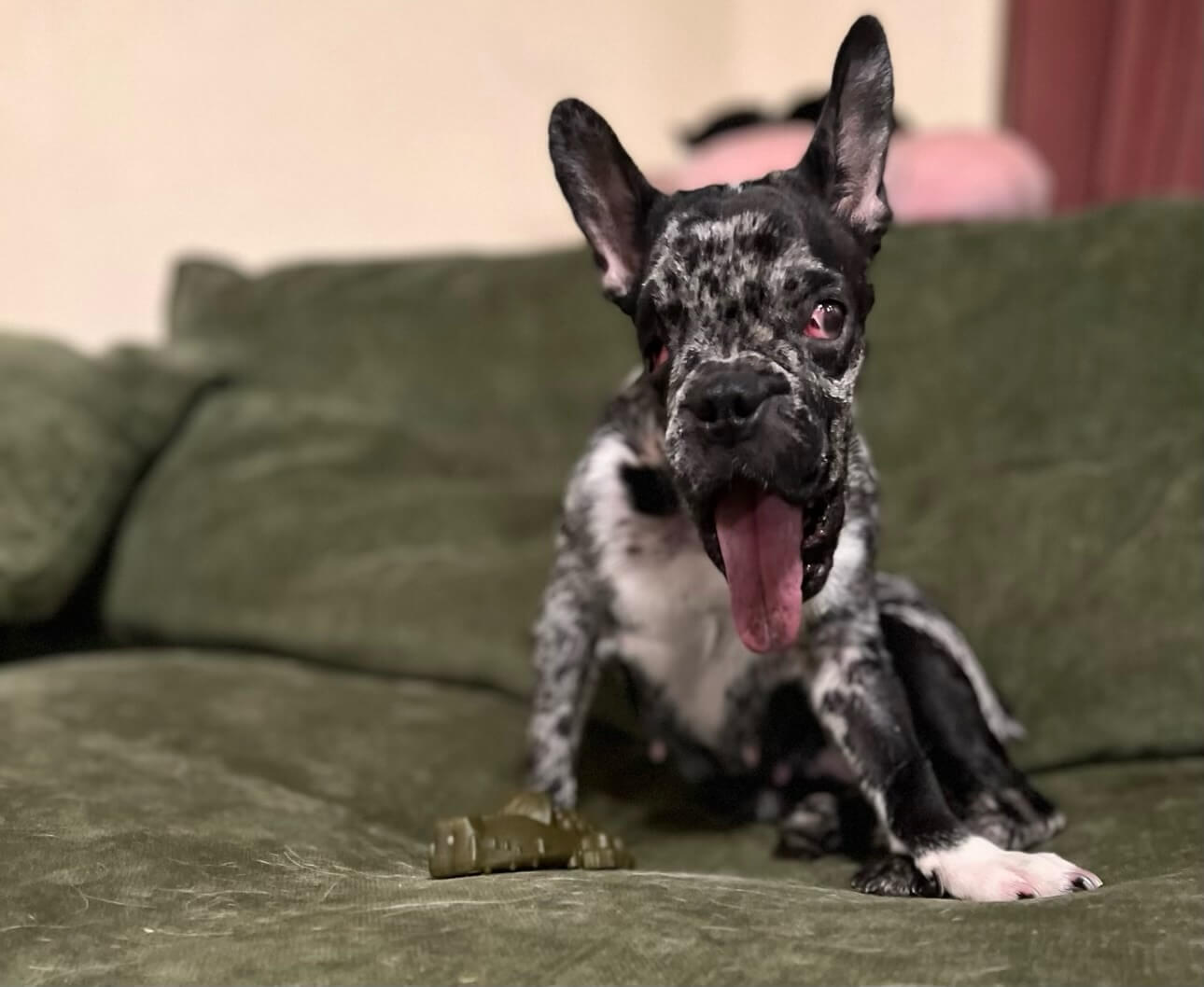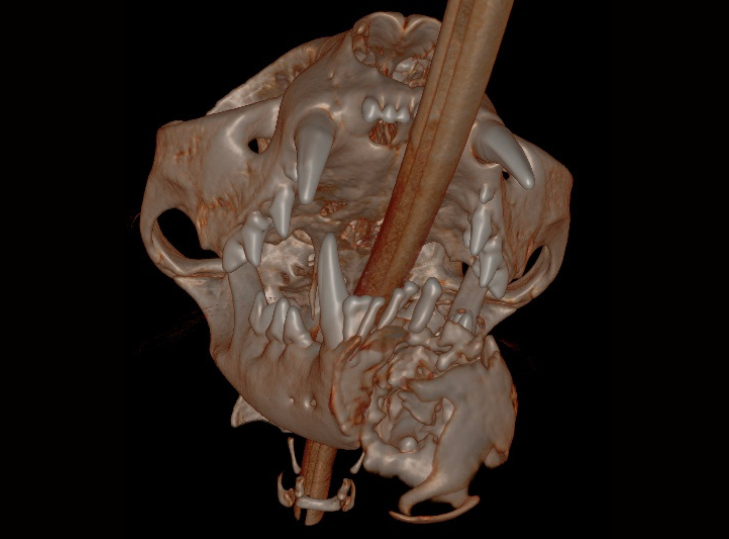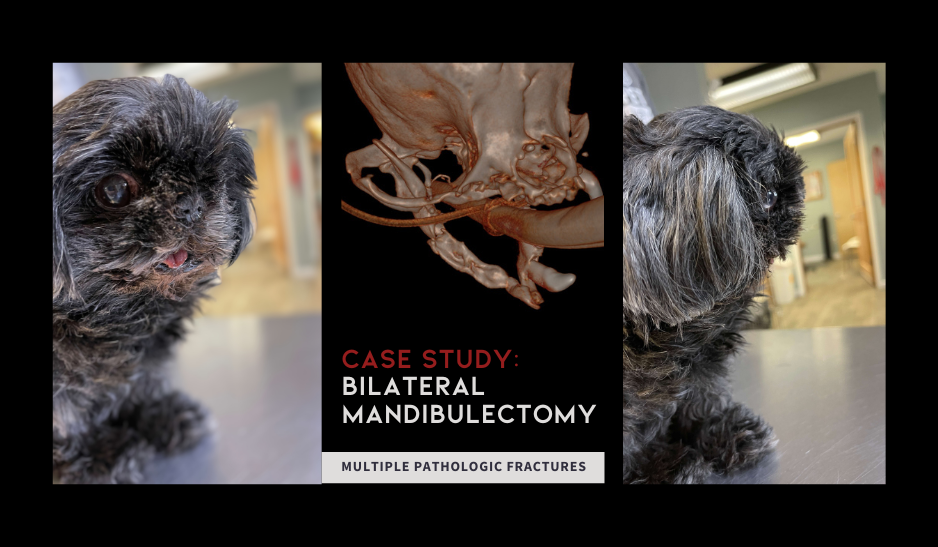Bilateral Rostral Mandibulectomy - Oral Mass
Case Summary: Removing or shortening the mandibles can be helpful. Most patients are more comfortable and can have a relatively cosmetic outcome....
2 min read
 Jennifer Mathis, DVM, DAVDC, CVPP
:
Sep 7, 2023 9:18:12 AM
Jennifer Mathis, DVM, DAVDC, CVPP
:
Sep 7, 2023 9:18:12 AM

Removing or shortening the mandibles can be helpful. Most patients are more comfortable and can have a relatively cosmetic outcome. As late as the 2-week recovery period, most dogs act as if nothing happened and are doing well having shortened mandibles. Sometimes the mandibles are removed due to fractures that cannot be repaired. Other times they are removed due to an oral tumor. This case was a genetic condition that necessitated this treatment.
Georgia is a 3 yr old French Bulldog with a genetic disorder preventing the mouth from opening properly. At another facility, the mandibles were previously cut to allow for some movement, but fibrous union of the site did not occur. The weight of the front of the mandibles and trauma that happened as she shook her head required removal of the mandibles. While the reason for this procedure was unusual, this is a needed surgery for some oral tumor cases and some jaw fractures caused by untreated dental disease. Georgia also has hydrocephalus and an anesthesiologist was requested by the owner to be on site to aid in the procedure. Anesthesia proceeded very smoothly and Georgia woke uneventfully.
Painful internal tooth resorption was noted and Georgia was accidentally swinging her jaw against the upper teeth and household objects causing additional pain.
(Hover over any image to read caption)
The upper teeth luckily required only cleaning, while the remaining lower mandibles were removed surgically as a subtotal mandibulectomy. The salivary ducts were preserved. The tongue hung out before any surgery was performed, and just hung further after the procedure. The chin was cosmetically aligned to create a rim to aid in saliva retention and provide a cosmetic outcome that was better than when Georgia presented.


Due to Georgia’s condition from puppyhood, she was already hand fed. While she is able to lap up food with her tongue, she was acting well the next day. Soft tissue healing does require 10-14 days, but many dogs and cats without teeth return to eating hard food and behaving as if nothing happened in 2 weeks. As with all pets, annual anesthetic dental procedures with intraoral x-rays are needed. Beyond that, no follow-up care is needed (after tissue healing) for the actual mandible removal.
If your pet needs the help of a veterinary dentist/oral surgeon look no further! My dog was experiencing a lot of pain and from the moment we called, Dr. Mathis and the team handled our case with care. My dog is doing well after her rostral mandibulectomy, eating and drinking and while she looks a little different, I couldn't be happier with the outcome of her surgery. Dr. Mathis was able to provide her with a more comfortable mouth and better cosmetic appearance in comparison to her prior to surgery.


Case Summary: Removing or shortening the mandibles can be helpful. Most patients are more comfortable and can have a relatively cosmetic outcome....

Case Summary: As noted in other posts, removing or shortening the mandibles can be a needed procedure. Most patients are more comfortable and can...
Case Summary: Guided Tissue Regeneration (GTR) is a technique performed to promote osseous regeneration, allowing for tissue growth (bone and soft...